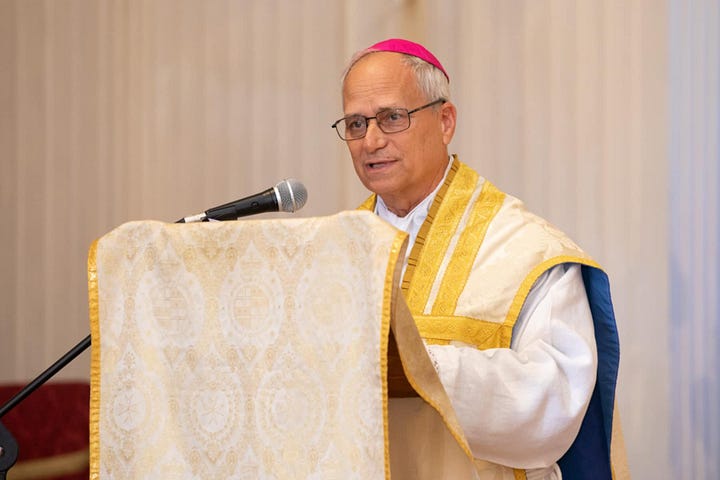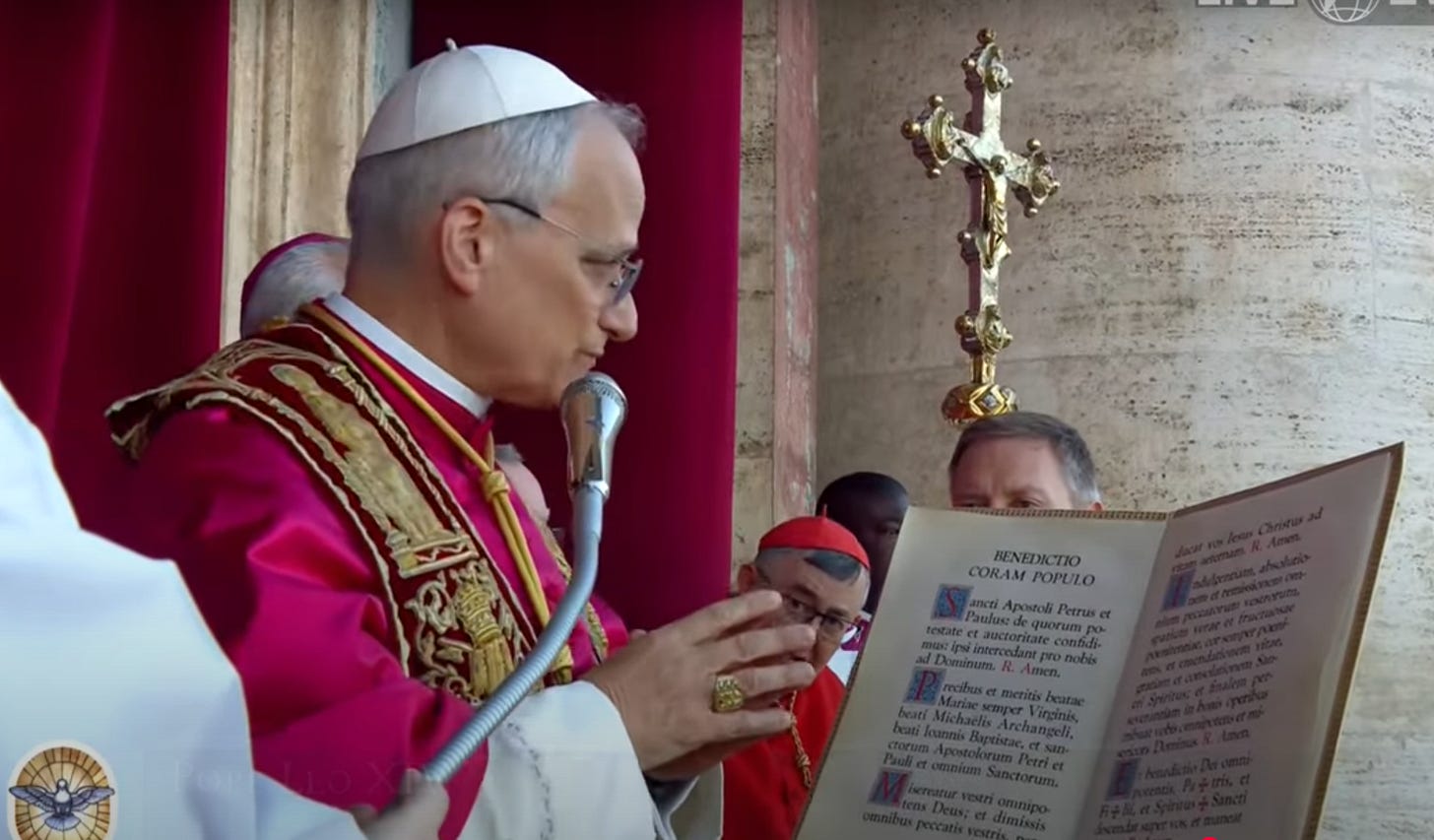SPECIAL: My Hopes, My Fears, and My Prayers for Leo XIV
(We’ll resume the usual Friday roundup next week.)
There is something surreal about this moment.
You see, for over twenty years now, my imaginary “ideal pope” who will restore Catholic Tradition has been dubbed… Leo XIV. Who knows, perhaps there are others who also had conjured up this (mythical?) figure in their minds.
And now, we have a Leo XIV.
But he is not the ideal pope. Apart from the fact that every man brings his limitations and sins with him to the office—as every single one of us does to our tasks in life, except for Our Lord and Our Lady—Robert Prevost is saddled with more than a few yellow flags and red flags. I will come to that in a moment.
There’s another reason for the feeling of surreality. The only American cardinal I know personally is Raymond Leo Burke. A true leo or lion of orthodoxy. While I never expected him to be elected pope—most cardinals regard him as extremely “right wing” when, in fact, he’s simply more consistently Catholic than most of them are—it is nonetheless bittersweet to think that the first American pope could have been someone of that mighty stature.
Another surreal aspect is where I was when all this happened.
I was sitting on an airplane flying from Chicago to Fort Myers, heading to an event with a Legatus chapter in Naples where I was to give a talk on “Treasuring the Goods of Marriage in a Throwaway Society” that evening. I had my laptop open in front of me with the EWTN livestream. With about 400,000 other viewers (according to the metric on the screen), I saw Leo XIV come out on my unfolded tray table, so to speak, and greet the world. Then the messages and emails began pouring in: “What do you think of the man?” and words to that effect.
My Hopes
Several things struck me immediately, as I’m sure they did many of you.
First, the new pope was wearing the mozzetta and a beautiful historic stole with Sts. Peter and Paul, and looked altogether as a pope should look. None of that ostentatious humility that consists in deliberately breaking with custom, as when Pope Francis appeared on the balcony back in 2013 looking practically undressed, or as when Cardinal Timothy Radcliffe walked into the conclave wearing his Dominican habit, standing out from everyone else like a sore thumb.
You can see this, too, in other vestments he’s worn, as in Malta:


Second, he took a classic papal name, one that has been carried, better or worse, by thirteen popes before him, beginning with St. Leo the Great and running down to the great pope of Catholic Social Teaching, Leo XIII. In fact, I believe he chose the name at least partly because he wishes to be seen as a pope of social justice. Once again, it is true humility to be one in a series, rather than breaking with all precedent by choosing a name no one has ever borne.
Lastly, the words of his speech on the loggia, although somewhat generic (you can find them here), did not give me the creeps the way Bergoglio’s loggia appearance did—and this has been the impression of a lot of people who watched both episodes. Then Leo gave the blessing in Latin—another gesture that was dignum et justum, and a sign of normalcy returning.
Why did the cardinals elect him? Let’s look at some reasons.
A good guess can be made that Parolin’s cause quickly lost support and there was a scrambling to find someone who would be left-of-center but also a peacemaker. Michael J. Matt wrote on Facebook:
Cardinal Robert Francis Prevost has been described as a balanced figure in the current debate about the future of the Church, particularly regarding the Latin Mass. He is seen as a potential bridge between Pope Francis's inclusive agenda and more conservative elements within the Church. While he has not explicitly taken a stance on the Latin Mass, his supporters highlight his ability to listen and synthesize diverse perspectives, suggesting he might find a way to reconcile different viewpoints on the matter.
I don’t know how true this brief assessment is, but I’m convinced that many cardinals had to be convinced of it; they would not have voted for a candidate who struck them as simply progressive, with no capacity at all to reconcile factions. The need to address painful divisions in the Church was a topic of some importance in the general congregations, and the cardinals’ choice presumably reflects that motivation.
Our Secondary Anniversary 25% discount on new paid subscriptions to Tradition & Sanity is available for ONE LAST DAY:
Take advantage of this special offer as we head into a new era under a new pope — with many new writers joining our masthead!
Keep reading with a 7-day free trial
Subscribe to Tradition and Sanity to keep reading this post and get 7 days of free access to the full post archives.



